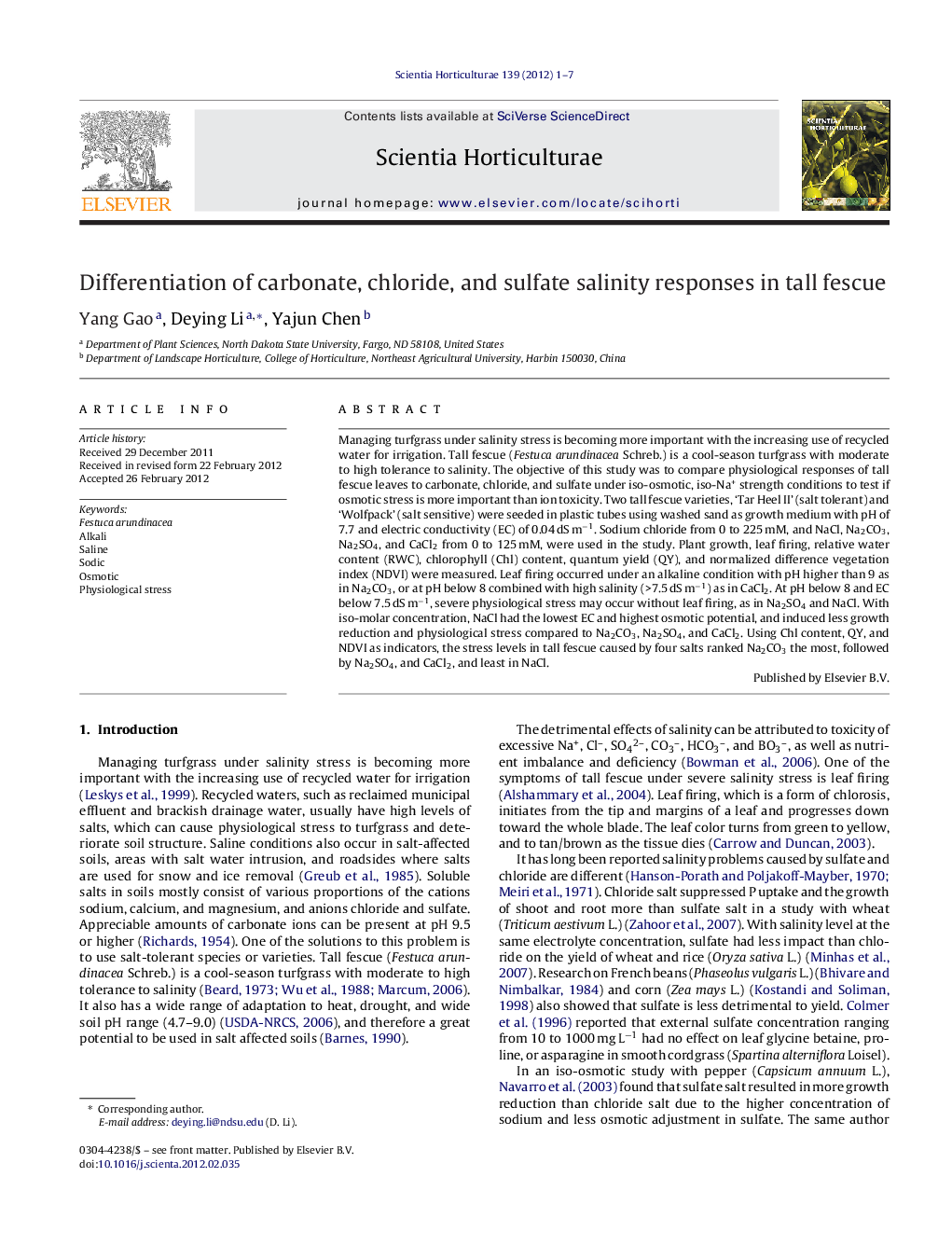| کد مقاله | کد نشریه | سال انتشار | مقاله انگلیسی | نسخه تمام متن |
|---|---|---|---|---|
| 4567727 | 1628859 | 2012 | 7 صفحه PDF | دانلود رایگان |

Managing turfgrass under salinity stress is becoming more important with the increasing use of recycled water for irrigation. Tall fescue (Festuca arundinacea Schreb.) is a cool-season turfgrass with moderate to high tolerance to salinity. The objective of this study was to compare physiological responses of tall fescue leaves to carbonate, chloride, and sulfate under iso-osmotic, iso-Na+ strength conditions to test if osmotic stress is more important than ion toxicity. Two tall fescue varieties, ‘Tar Heel II’ (salt tolerant) and ‘Wolfpack’ (salt sensitive) were seeded in plastic tubes using washed sand as growth medium with pH of 7.7 and electric conductivity (EC) of 0.04 dS m−1. Sodium chloride from 0 to 225 mM, and NaCl, Na2CO3, Na2SO4, and CaCl2 from 0 to 125 mM, were used in the study. Plant growth, leaf firing, relative water content (RWC), chlorophyll (Chl) content, quantum yield (QY), and normalized difference vegetation index (NDVI) were measured. Leaf firing occurred under an alkaline condition with pH higher than 9 as in Na2CO3, or at pH below 8 combined with high salinity (>7.5 dS m−1) as in CaCl2. At pH below 8 and EC below 7.5 dS m−1, severe physiological stress may occur without leaf firing, as in Na2SO4 and NaCl. With iso-molar concentration, NaCl had the lowest EC and highest osmotic potential, and induced less growth reduction and physiological stress compared to Na2CO3, Na2SO4, and CaCl2. Using Chl content, QY, and NDVI as indicators, the stress levels in tall fescue caused by four salts ranked Na2CO3 the most, followed by Na2SO4, and CaCl2, and least in NaCl.
► Two tall fescue varieties were tested under salinity stress from NaCl, Na2CO3, Na2SO4, and CaCl2.
► At the same level of molar concentration, four salts generated different pH, electric conductivity, and osmotic potential.
► The stress levels in tall fescue ranked most to least as Na2CO3, Na2SO4, CaCl2, and NaCl at iso-molar concentration.
► Based on leaf firing in tall fescue, pH was more influential than electric conductivity and osmotic potential.
► Judged by leaf water and chlorophyll content, CaCl2 caused more severe osmotic stress in tall fescue than NaCl.
Journal: Scientia Horticulturae - Volume 139, 18 May 2012, Pages 1–7